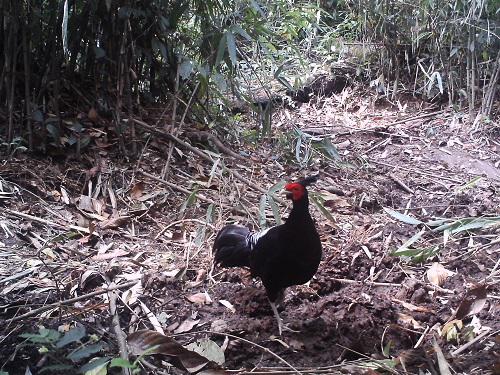Nandini Velho
With prevailing markets, cultural perceptions and failing governmental institutions, this project will assess how much mammalian biodiversity is harboured in protected areas versus community forests.
As protected areas continue to undergo degradation, and the adjacent unprotected areas are logged or converted to agriculture or other human use, our understanding of the consequences of habitat change for wildlife within and outside protected areas is clearly lacking. This is especially so for the Palaeotropics and particularly the developing countries of south Asia, where high human populations exert ever-increasing pressures on protected areas.

Khaleej Pheasant in camera traps.
The remote state of Arunachal Pradesh in India spans two global biodiversity hotspots, and includes two-thirds of all the remaining primary forest in India, with almost 60% of these forests under community control. Arunachal Pradesh has suffered local extinctions of several important mammal species, species range contractions and continuing native-forest loss in a backdrop of complex social issues and institutional inadequacies.
I will select three to four study blocks, each of which includes a protected area and adjacent community-regulated forest in the Indian state of Arunachal Pradesh. Because the study area contains extremely steep and rugged terrain that limits physical accessibility, I will use existing roads as the backbone of my sampling effort. Along transects, I will record signs of mammals and collect data on habitat characteristics and human activity. Using a robust paired-sample design I will contrast the index abundance of individual mammal species as well as species richness, between the pairs of protected areas and community forests.
This study will help evaluate the real status of community forests and protected areas in Arunachal Pradesh. North-eastern India is also well-suited to implementing data-driven conservation at multiple levels, broadly including centralized forest management and community-based conservation initiatives. This study will provide useful insights about these management regimes.